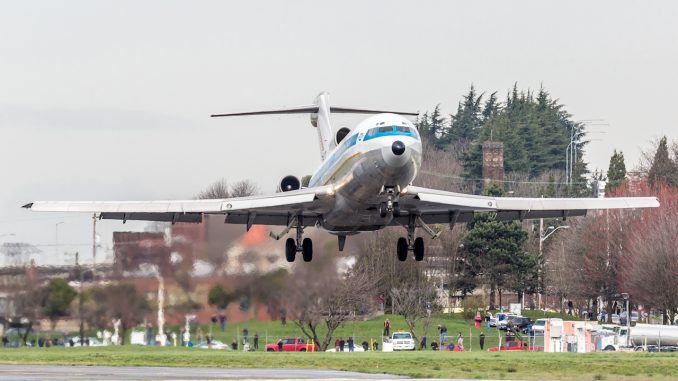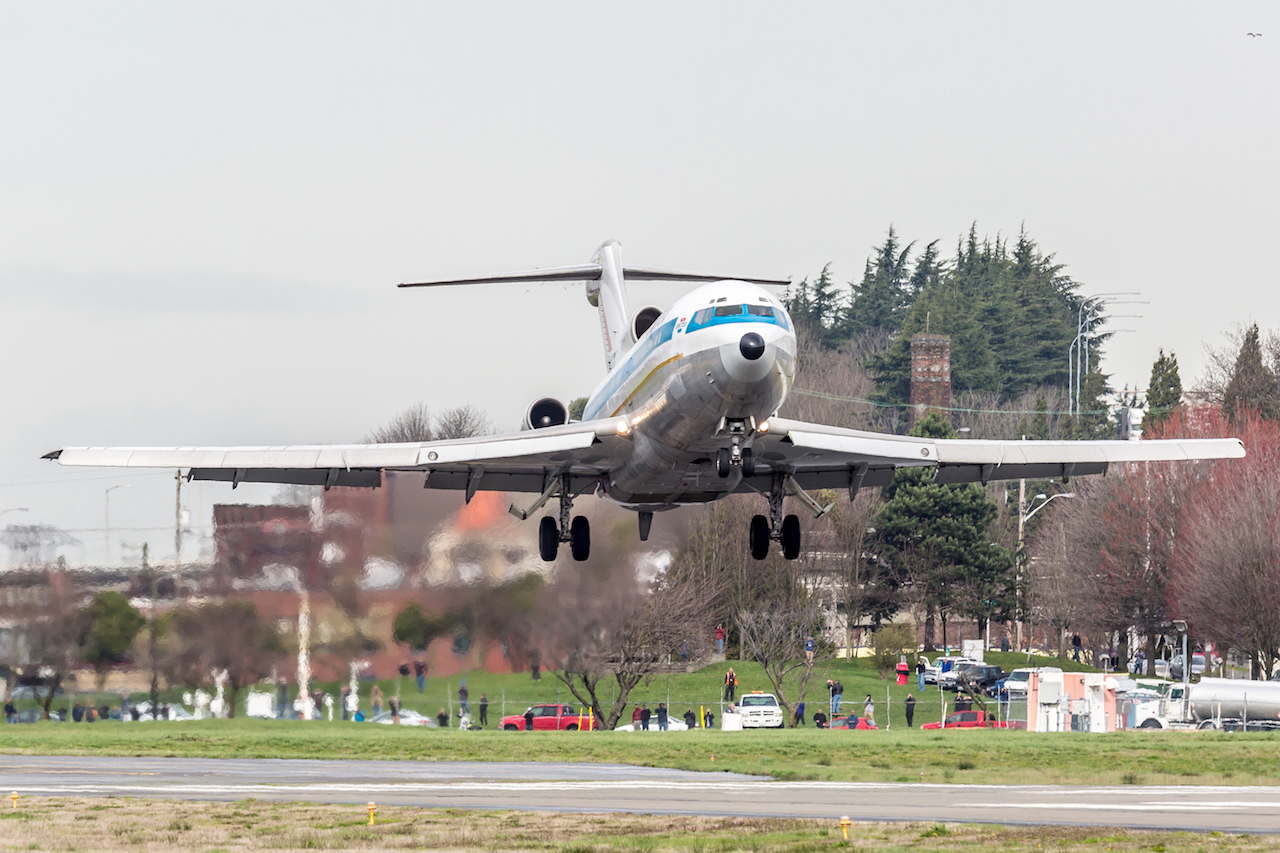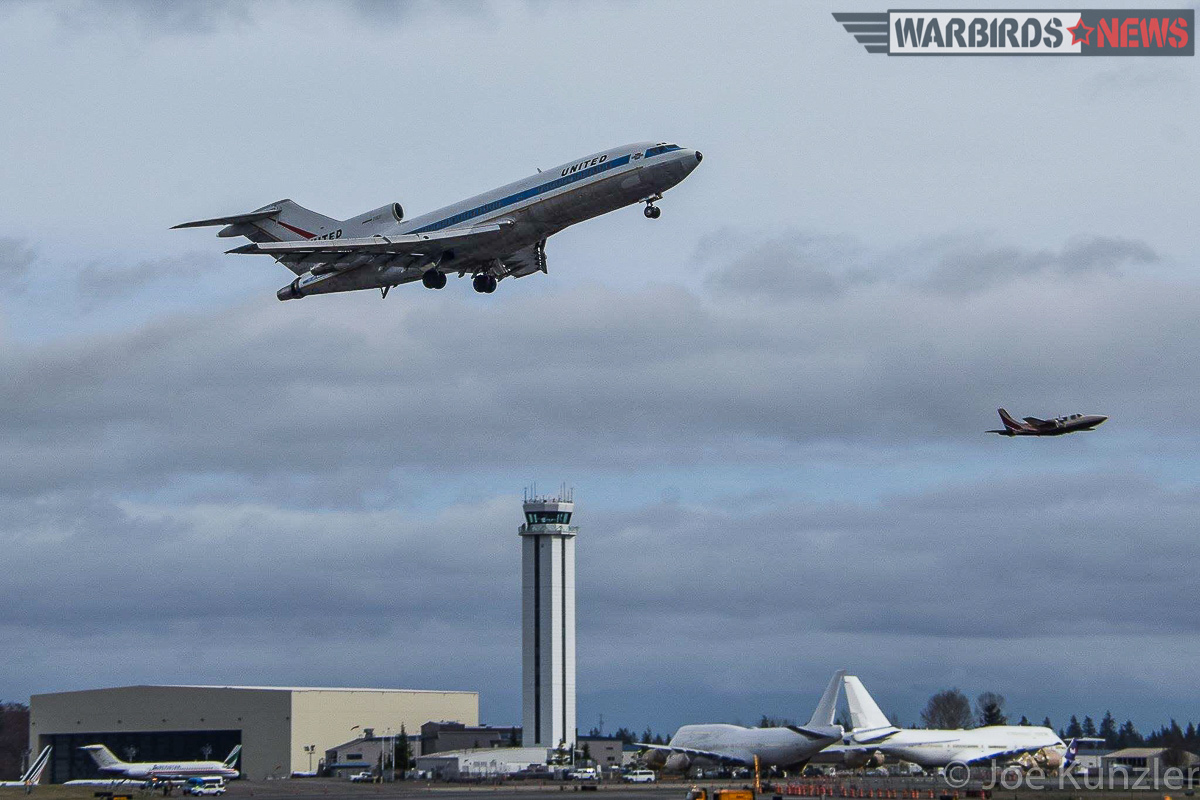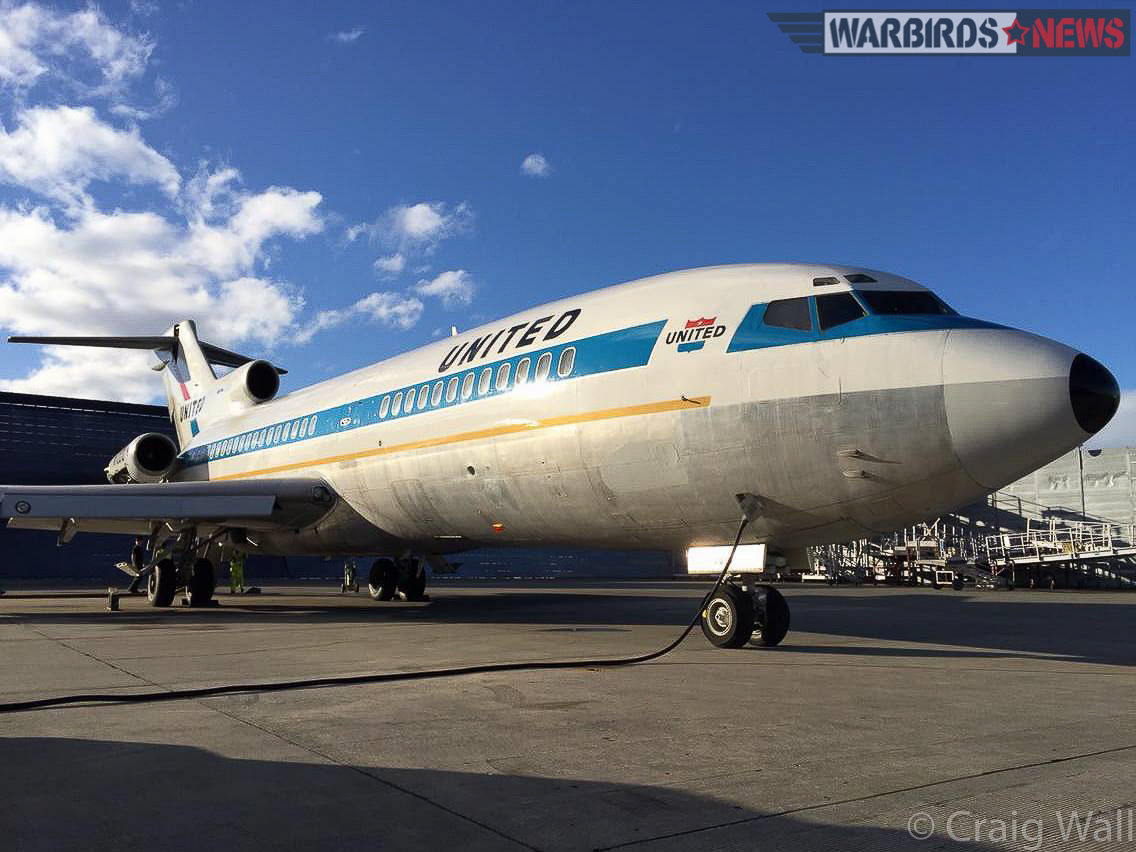

In addition to WarbirdsNews breaking news reporting on the final flight of the Boeing 727 airliner prototype yesterday, we thought our readers might enjoy reading the Museum of Flight’s official press release covering the event too… so here it is!
Yesterday morning the Museum of Flight’s recently-restored Boeing 727 prototype made its first flight in 25 years; the flight also marked the airplane’s last flight ever. The Future of Flight at Paine Field in Everett, Wash. held a preflight ceremony while hundreds of enthusiastic fans and former 727 flight crew members awaited the plane’s arrival at The Museum of Flight. The plane received a heartfelt welcome at the Museum when it taxied through the Museum’s Boeing Field gate at 11 a.m.
The final flight from Paine Field to Boeing Field lasted less than 15 minutes. Upon landing it taxied directly into the Museum’s parking area-through a celebratory arch of water created by water cannons on Boeing and King County firetrucks-where the engines were shut down for the last time. After the ceremonies, the plane was opened to the public, where they were able to tour for the remainder of the day as part of their admission. The 727 will also be open to the public this weekend, March 5-6, also free with admission (tours inside of the plane will only be available if it is not raining that day).
The 727’s brief trip from Everett to Seattle was flown under a special flight permit, with only essential flight crew onboard during the flight: pilot Tim Powell, co-pilot Mike Scott, flight engineer Ralph Pascale, and safety officer Bob Bogash. Powell, Scott and Pascale fly 727s on a regular basis; airline and corporate pilot Powell has over 10,000 hours at the controls of various 727s. Bogash is the Museum’s 727 project manager.

727 Open for Public Tours March 5-6
This weekend, March 5-6, the plane will be open for public tours, free with admission to the Museum. Interior tours available only if it does not rain on that day.
The 727 will be on temporary display in the Museum’s Airpark through the summer. It will be moved for permanent display in the Aviation Pavilion in the fall.
This unique jet has not been airborne since it was donated to the Museum by United Air Lines in 1991, and has been under restoration ever since by volunteer crews at the Museum’s Restoration Center and Reserve Collection at Paine Field, Everett, Wash.

United removed many of the major parts on the airplane, to use as spares for its remaining fleet of 727s. The Museum was left with a significant challenge with its goal to restore the airplane to airworthy condition. After a few idle years the restoration began in earnest, and grew significantly with the donation of two more 727s for parts. On March 6, 2004, Federal Express donated a 727-100 airplane to the Museum, and in September 2005, Clay Lacey donated a 727-200.
For the past 25 years, dozens of enthusiastic volunteers have helped bring the plane back to life. FedEx has been a long-time partner on the project, and recently donated the engines that will power the plane on its final flight. The expertise and equipment for the huge project has been international and from all walks of life.
The Museum of Flight
Founded in 1965, the independent, non-profit Museum of Flight is one of the largest air and space museums in the world, serving more than 560,000 visitors annually. The Museum’s collection includes more than 160 historically significant airplanes and spacecraft, from the first fighter plane (1914) to today’s 787 Dreamliner. Attractions also include the original Boeing Company factory, and the world’s only full-scale NASA Space Shuttle Trainer. The Museum’s aviation and space library and archives are the largest on the West Coast. More than 150,000 individuals are served annually by the Museum’s on-site and outreach educational programs. The Museum of Flight is accredited by the American Association of Museums, and is an Affiliate of the Smithsonian Institution.
2016 Boeing Centennial Recognition
The Museum of Flight draws upon its unrivaled collection of Boeing aircraft, artifacts, images and documents to present The Boeing Company story during the year of its centennial, 2016. The Museum-wide Boeing recognition will be enhanced with public lectures, films and other presentations that focus on Seattle and popular culture during the past century.
The Museum of Flight is located at 9404 E. Marginal Way S., Seattle, Exit 158 off Interstate 5 on Boeing Field halfway between downtown Seattle and Sea-Tac Airport. The Museum is open daily from 10 a.m. to 5 p.m. Admission is $20 for adults, $17 for seniors 65 and older, $17 for active military, $12 for youth 5 to 17, and free for children under 5. Group rates are available. Admission on the first Thursday of the month is free from 5 to 9 p.m. courtesy of Wells Fargo. McCormick & Schmick’s Wings Café is on site. For general Museum information, please call 206-764-5720 or visit www.museumofflight.org


Be the first to comment
Graphic Design, Branding and Aviation Art